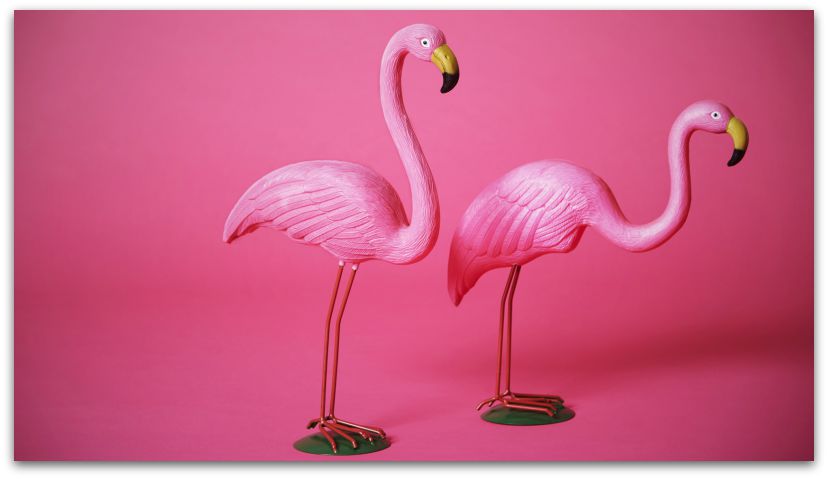They weren’t the same person. Here’s a look at two guys who, for better or for worse, changed modern life.
Donald Featherstone
Donald Featherstone has died at the age of 79. He was the inventor of a singularly American object of pure kitsch: the pink lawn flamingo. In 1957, Featherstone was a classically trained sculptor living in Massachusetts, but was quite literally a “starving artist.” That’s when he reluctantly took a job with Union Products, a plastic company, to create and sculpt inexpensive, three-dimensional lawn and yard ornaments. His first assignment: a girl holding a watering can. After that, a boy and his dog. Featherstone did such a good job on a plastic duck (based on a pet duck he bought just for the assignment) that Union asked him to make a flamingo. Since he couldn’t buy one, he hit the library and based his design on a picture in National Geographic. The pink flamingo became Union’s bestselling item ever—millions have appeared on lawns across the world (as have millions of knockoffs). Featherstone was propelled up the corporate ladder and by the time he retired in 1999, he was the president of the company. (Another fun Featherstone fact: He and his wife, Nancy, wore matching outfits every day for 35 years.)
Matti Makkonen
Matti Makkonen passed away this June at the age of 63. He was a communications executive in Scandinavia, working for mobile phone companies such as Nokia, Tele Finland, and Finnet Oy. Those jobs earned him a nice living, but he’s being remembered around the world as the inventor for a technology that didn’t earn him any money: Makkonen invented text messaging. Over an informal dinner of pizza after a telecommunications industry conference in 1984, Makkonen, then a civil servant pitched to telecom executives the idea to send short text-only messages over the then-burgeoning technology of mobile phones. A year later, the 160-character limit for SMS (“short message service”) was established by another inventor, and the first text was sent in 1992 to a Vodafone executive. The development of texting was very collaborative, which is why Makkonen never patented his idea. He never even wanted to receive full credit—his involvement wasn’t even widely known until a 2012 BBC documentary on texting was produced. Billions of text messages are now sent worldwide, and it has resulted in other technologies, such as Twitter and emoji.









